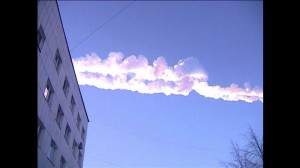Meteor shower visible in PH Sunday or Monday
MANILA, Philippines—Meteors in the annual Eta Aquarids shower will streak across Philippine skies at the pre-dawn hours of Sunday or Monday, the astronomy section of the state weather bureau said.
Stargazers in the Philippines will be able to see from five to 10 meteors per hour during the shower that will occur before sunrise on May 5 or 6, according to the Philippine Atmospheric, Geophysical and Astronomical Services Administration.
According to the monthly astronomical diary prepared by Pagasa officer-in-charge Vicente Malano, the meteor shower originates from dust released by the famous Halley’s Comet (1P/Halley) during its countless voyages through the solar system.
“The shower results when Earth crosses the orbit of Halley’s Comet, running into clouds of debris or meteoroids shed by the comet due to heating of the Sun,” Pagasa said.
On its website, the United States’ National Aeronautics and Space Administration ) issued some tips for stargazers who want to catch the spectacle:
“Find an area well away from city or street lights. Lie flat on your back on a blanket, lawn chair or sleeping bag and look up, taking in as much of the sky as possible. After about 30 minutes in the dark, your eyes will adapt and you will begin to see meteors,” it said.
“Be patient,” advised NASA. “The show will last until dawn, so you have plenty of time to catch a glimpse.”
Meanwhile, an annular solar eclipse will occur on May 10, and will be visible in the Central Pacific region, which spans most of New Zealand, Australia, Indonesia and the southern parts of Philippines, Pagasa said.
“In the southern Philippines, the event will be observed as a partial solar eclipse,” it said.
A solar eclipse occurs when the moon passes between Earth and the sun, thereby totally or partially obscuring the image of the sun as viewed from the Earth, Pagasa said.
“An annular solar eclipse occurs when the moon’s apparent diameter is smaller than the sun, causing the Sun to look like an annulus (ring), blocking most of the sun’s light. An annular eclipse appears as a partial eclipse over a region thousands of kilometers wide,” it added.
